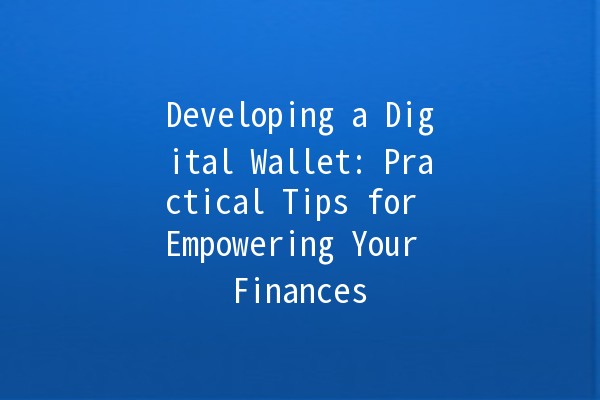
In recent years, digital wallets have transformed the way we handle money, making transactions more convenient and secure. The rise of cryptocurrencies, contactless payments, and financial apps has led to an increased demand for userfriendly digital wallet applications. Understanding how to effectively develop a digital wallet can provide invaluable insights not only for developers but also for users aiming to maximize their financial management.
Understanding the Basics of Digital Wallets
Digital wallets, also known as ewallets, are applications that allow users to store, manage, and transfer their digital assets securely. They facilitate electronic transactions, including online purchases, peertopeer money transfers, and cryptocurrency dealings. The core components include:
Storage of Payment Information: Securely storing credit/debit card information, bank details, or cryptocurrencies.
Transaction Capabilities: Allowing users to send and receive money, either locally or internationally.
Security Features: Implementing measures like encryption, biometric identification, or twofactor authentication to protect user data.
Key Benefits of Using Digital Wallets

Boosting Productivity as a Developer: Five Practical Tips
As a developer, maximizing your productivity while working on a digital wallet project is crucial. Here are five actionable tips to help you streamline your development process:
Description: Implementing agile methodologies such as Scrum or Kanban can help keep your team organized and responsive to changes.
Application Example: For instance, dividing your project into sprints allows you to focus on completing specific functionalities of the digital wallet, such as user interfaces or security features, within set timeframes, encouraging constant feedback and adaptation.
Description: Start by developing an MVP to test core functionalities before further investment into features.
Application Example: By releasing a basic version of your digital wallet that allows payments and balance checks, you can gather valuable user feedback, identify pain points, and validate your product concept without extensive upfront development.
Description: Creating reusable code components not only improves the efficiency of the development process but also enhances code maintainability.
Application Example: If your wallet includes a transaction processing feature, develop a modular codebase that can be reused across multiple functions, such as transaction history and direct payments, reducing redundancy and potential bugs.
Description: Implementing continuous testing and integration practices will ensure that any disruptions during development are minimized.
Application Example: By using CI/CD tools like Jenkins or GitLab CI, you can automate the testing of new features as they are developed, ensuring that the integration of new functionalities doesn’t break existing ones. This leads to a more stable release cycle.
Description: Conducting code reviews amongst team members increases code quality and knowledge sharing within the team.
Application Example: Schedule regular sessions where developers present their code for feedback. This practice not only helps in catching errors but also fosters mentorship and continuous learning among team members.
Navigating User Experience (UX) and User Interface (UI)
Creating a seamless user experience is paramount in digital wallet development. A welldesigned interface encourages user engagement and retention. Here are some critical considerations:
Intuitive Design: The wallet application should have a clean and simple UI that allows users to navigate easily through various features.
Onboarding Process: A userfriendly onboarding experience that guides new users in setting up their accounts and understanding the wallet's functionalities will greatly enhance user retention.
Accessibility Considerations: Incorporating features that cater to users with disabilities, such as voice commands or screen readers, is essential for ensuring inclusivity.
Important Security Measures
As digital wallets handle sensitive financial information, implementing robust security features is nonnegotiable. Here are some effective strategies:
to Encryption: Use encryption protocols to ensure that data transmitted between users and the wallet services remain confidential.
Biometric Authentication: Integrating fingerprint or facial recognition adds an extra layer of security that is convenient for users.
Fraud Detection Mechanisms: Implement machine learning algorithms that analyze transaction patterns to detect and alert users of any suspicious activity.
Common Questions About Digital Wallet Development
Q1: What technologies are commonly used in developing digital wallets?
Developers typically utilize languages such as Java, Kotlin for Android, or Swift for iOS. Backend services may employ frameworks like Node.js or Ruby on Rails, and databases like PostgreSQL or MongoDB. Additionally, APIs for payment gateways and blockchain technology are integrated for specific functionalities.
Q2: How do payment gateways fit into digital wallet functionality?
Payment gateways act as thirdparty services that process transactions, connecting your digital wallet to banking networks and card providers. They facilitate secure transactions and help in the compliance of regulatory standards.
Q3: What are the challenges of keeping user data secure?
Maintaining security involves constant vigilance against evolving cyber threats. Developers must consistently update their security protocols and educate users on safe practices. Compliance with regulations such as GDPR or PCIDSS is also essential to protect user information.
Q4: How can I optimize performance for my digital wallet app?
Optimizing performance involves selecting the right technology stack, conducting load testing, and implementing caching techniques. Additionally, ensuring the app is responsive and adapts well across different devices can significantly enhance user experience.
Q5: How does user feedback impact digital wallet development?
Collecting and analyzing user feedback can highlight pain points and areas for improvement. Regular updates based on user suggestions can increase satisfaction, foster loyalty, and improve engagement with the wallet application.
Q6: What trends should developers be aware of when creating digital wallets?
Staying informed about trends such as decentralized finance (DeFi), cryptocurrency integration, and AIdriven personal finance management can help developers create forwardthinking wallet applications that meet evolving user expectations.
By prioritizing effective development practices, focusing on user experience, and implementing robust security measures, developers can create digital wallets that empower users to manage their finances confidently and conveniently.

